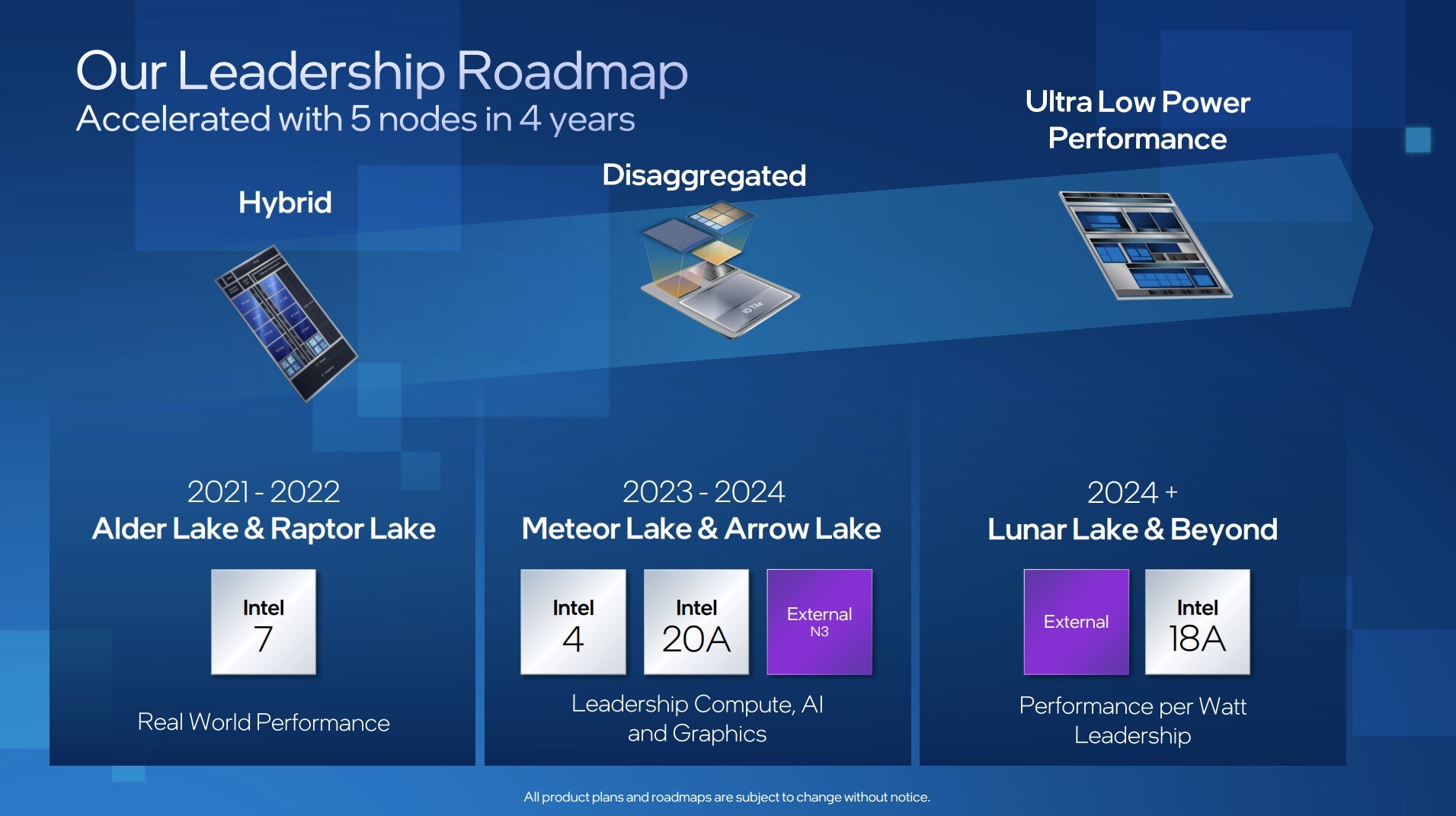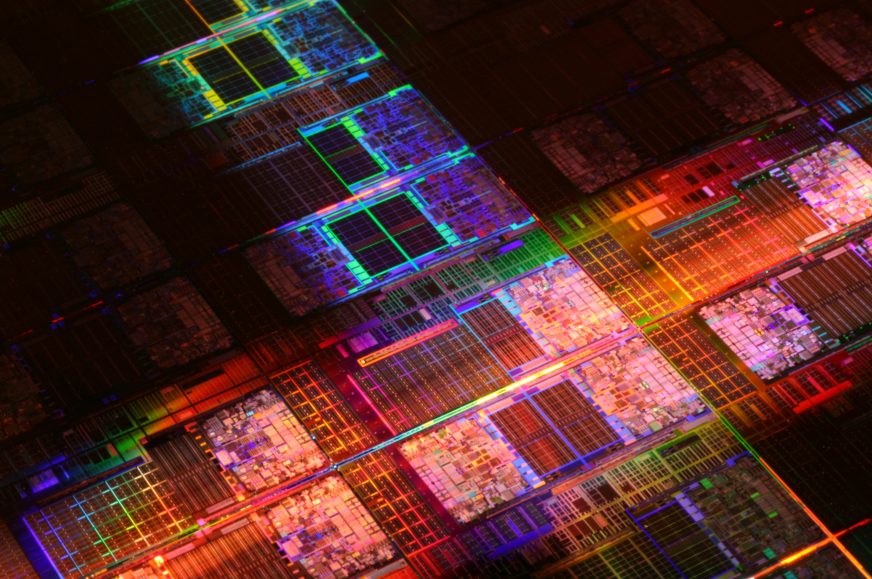15th Generation Intel Core / Arrow Lake looks to be a 2025 product
There was a report that Intel allegedly cancelled the desktop version of the first 4nm Meteor Lake CPUs, which could indicate that the process is having issues similar to the early 10nm technology – like not reaching high enough clock speeds. But that may not be the only blow to Intel’s upcoming products. Now there are reports that even the 3nm chips, ironically enough those that it plans to outsource to TSMC, may be delayed as well.
It’s a short piece of information from DigiTimes, which has sources in the Taiwanese computer industry. It recently broke the news that Intel is pushing its earlier-made production orders with TSMC further into the future. And these are orders to manufacture chips on the most advanced 3nm process. While Intel has traditionally made processors on its own manufacturing processes, some two years ago it was leaked that it was going to use essentially competing “foundry” vendors’ process technology as well, which at the time caused considerable uproar and doubts about Intel’s long-term strategy.
Intel reportedly even came to an agreement with TSMC to receive one dedicated factory with a separate team that would not service other customers. Presumably to reduce the risk of having the employees be in contact with others and divulge any secrets to competitors such as Apple or AMD.
Read more: Intel reaches CPU manufacturing deal with TSMC, will have entire 3nm fab to itself
Originally, it was expected that Intel could launch some processors with 3nm silicon from TSMC as early as 2023, but the integrated GPU tiles of Meteor Lake (the upcoming Core 14th generation), which was thought of as a candidate, ultimately uses TSMC’s 5nm node. Now it looks like these products won’t even come out in 2024.
According to DigiTimes, Intel has now postponed their planned production on TSMC’s 3nm process until the fourth quarter of 2024. This almost certainly means that the launch of the resulting processors or other products will not be possible until sometime during 2025.
Arrow Lake, or Lunar Lake?
What processors or products Intel had on TSMC’s 3nm process, however, is somewhat unclear. There has been talk that it could be Arrow Lake processors (Core 15th generation following Meteor Lake), or Lunar Lake processors that would come out either in parallel or as Core 16th generation – and allegedly could be quite groundbreaking.

However, we do not know the manufacturing processes for any of these processors for sure, so there is uncertainty about which product is affected by the current news about the delayed start of production. It could theoretically even be a standalone Arc GPU instead of a CPU – for example, a third-generation Arc codenamed Celestial if the second-generation Arc “Battlemage” is based on 5nm or 4nm technology.
Who’s to blame?
Theoretically, TSMC could also be partly to blame for the delay in the launch of 3nm products, because the development of this technology has also not been flawless and the first version of the manufacturing process seems to have both delays and problems with the achieved parameters. Intel could therefore be delaying mass production of the products in question simply because the process was not yet satisfactory by the original deadline. However, it is quite likely that the problem is also on Intel’s side and is a manifestation of problems with the architectural development of the product.
If Intel is struggling to manage the development of the previous generation of Meteor Lake processors and is running behind schedule, it is likely that this delay will cascade down to subsequent products. Indeed, they may depend on the technologies and IP processed in the previous generation. And if delays and technical difficulties arising in development are a symptom of systemic problems, it may mean that Intel is spreading itself too thin and its plans are too ambitious for what its teams can realistically handle. This probably has been a factor behind the past extreme problems with the 10nm process. And if this is a systemic problem, then it is likely that the manifestations may reappear in future generations until the causes are resolved.
Source: DigiTimes
English translation and edit by Jozef Dudáš
⠀








